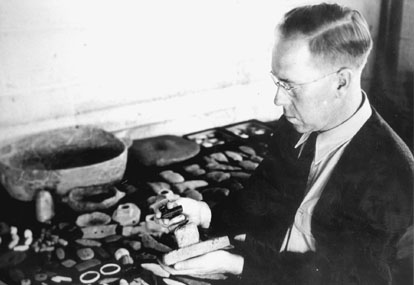

 | Page 613 |  |
In 1936, the Great Depression drew Harrington toward historic sites when the National Park Service hired him, because of his architectural-archaeological background, to direct a new excavation project at jamestown, virginia, the first permanent English colony (1607) in North America. Between 1936 and 1941, when World War II halted most excavations in the United States and canada, Harrington at Jamestown and his colleagues at other famous sites across the continent experimentally developed basic field techniques, laboratory procedures, and intellectual perspectives for the study of historic Euro-American sites. This emphasis on early and famous individual sites continued after the war when Harrington, with the professional support of his wife, Virginia Sutton Harrington, went on to explore the locations of some of the most recognized events in American history. His site-specific orientation is also seen in his first attempts to name the new field “historic site archaeology.”

J. C (“Pinky”) Harrington in 1940 examining prehistoric artifacts at Jamestown
(Courtesy of the National Park Service, Colonial National Historical Park)
Although he returned to Jamestown to excavate the glasshouse site in 1949, his next major project involved Sir Walter Raleigh’s sixteenth-century fort in North Carolina, which Harrington explored between 1947 and 1950 and published the results in 1962 as “Search for the Cittie of Raleigh” (Harrington 1962). Two years later in western Pennsylvania (1952–1953), he explored a much later colonial site, Fort Necessity, a battlefield during the French and Indian Wars in North America in the middle of the eighteenth century. Harrington’s New Light on Washington’s Fort Necessity (1957) is one of the first professional reports produced in the United States on a Euro-American site, and it stands to this day as a benchmark in the combining of archaeological and archival sources.
Although Harrington worked at many other national sites, including Fort Frederica, West Point (Constitution Island), the Appomattox Courthouse, and the great Mormon nineteenth-century city of Nauvoo on the Mississippi
 |  |